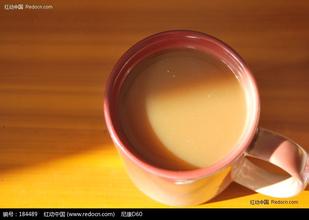Introduction to the characteristics of the Fine Coffee Flavor of Kilimanjaro in Tanzania
The eastern coastal areas and inland lowlands of Tanzania have a savanna climate, while the western inland plateau has a tropical mountain climate, with an average temperature of 21-25 ℃ in most areas. More than 20 islands in Zanzibar have a tropical maritime climate, hot and humid all the year round, with an annual average temperature of 26 ℃. [6]
The types of rainfall can be divided into bimodal distribution and unimodal distribution. The areas with double bee rainfall include the provinces around the Lake Victoria basin, the northeast highlands, the coastal and inland northeastern. The bimodal rainfall area is characterized by two rainy seasons. The short rainy season occurs from September to December. The total rainfall can reach 200-500 mm. The long rainy season occurs from March to May, and the rainfall reaches 300-600 mm. The areas outside the double bee distribution rainfall area belong to the single bee distribution rainfall area, the rainfall time is from November to April, and the rainfall reaches 500-1000 mm.
Hydrology
The main rivers in Tanzania are the Rufidi River (1400 km long), the Pangani River, the Rufu River, the Wami River and so on. There are many lakes, including Lake Victoria, Lake Tanganyika and Lake Malawi. [7]
Natural resources editor
Beautiful scenery of Tanzania
Beautiful scenery of Tanzania
Tanzania is rich in mineral resources. By 2014, the major minerals identified include gold, diamond, iron, nickel, phosphate, coal and various gemstones, ranking fifth in Africa in total. Tanzania also has huge natural gas reserves. According to official data released by Tanzania, Tanzania has proven natural gas reserves of 44 trillion cubic feet, and the total reserves are expected to reach at least 200 trillion cubic feet. [8]
Gold
Found in many parts of the mainland, Lake Victoria is comparable in geology and scale to the major gold producing areas of Australia, Canada, South Africa and Zimbabwe, with proven reserves of 18 million ounces and estimated reserves of up to 30 million ounces. Tanzania coffee beans are absolutely comparable to neighboring Kenya, but the quality of coffee in the country is not strictly controlled, and carelessness in many processes often destroys the quality of coffee (such as transportation). Good quality Tanzanian coffee beans are divided into AA and A grade.
The raw beans of this Tanzanian AA coffee bean look neat and have a delightful light green. The roasted Tanzanian AA coffee beans are plump, granulated and similar in shape to Bourbon.
Drip filter brewed city-roasted Tanzanian AA coffee beans, the entrance does not have any unpleasant taste, although insipid, but balanced, but also rich.
Drinking coffee is like looking at life, what is happiness? every day is light is very happy. Tanzania AA coffee beans are such coffee Tanzania AA Tanzania AA coffee beans are smaller and more round than most coffee beans look like peas. Tanzanian coffee beans have different qualities, such as Kilimanjaro coffee. Its delicate aroma, with aromas of wine and fruit, makes people taste endless after tasting. It is very similar to Kenyan coffee in appearance, and its overall taste is more similar to Sumatra Kalou coffee. Tanzania AA Tanzania AA coffee beans always feel a soft, mellow earthy flavor around the mouth. Tanzania AA Tanzania AA coffee beans are roasted moderately or above with a strong aroma and are suitable for use as a single product or iced coffee.
Tanzania AA Tanzania AA Coffee beans description:
The more famous production area is Mount Kilimanjaro, the highest mountain zone on the African continent, with a height of 3,000 to 6,000 feet, which is the most suitable area for growing coffee. Full-bodied and refreshing all sweet, low acidity, balanced taste, strong aroma Kilimanjaro coffee is very characteristic, it emits delicate aroma, and contains wine and fruit aroma, people taste endless aftertaste, from the appearance is very similar to Kenyan coffee, the overall taste is more similar to Sumatra Kalou coffee. After drinking Kilimanjaro coffee, I always feel a soft and mellow smell of soil at the corners of my mouth. Coffee gourmets often use words such as "wild" or "wild" to describe it. It can be said that pure Kilimanjaro coffee is "the most African coffee." Tanzanians still maintain a lot of coffee tradition, and many times they collect ripe and fallen fruits under coffee trees. This will somewhat damage the quality of the coffee. They have been using the sun method to treat coffee beans, rarely using water washing, which allows the coffee beans to absorb the aromatic substances of the flesh, so the fruit flavor is heavier. Mount Kilimanjaro in Tanzania is 5895 meters above sea level and is connected to Mount Meru. It is the main production base of Kilimanjaro coffee. Mount Kilimanjaro is the highest peak on the African continent and the only snowy peak on the earth located on the equatorial line. It is "the roof of Africa" and "Snow White on the equator". The rich volcanic ash gives the coffee here a strong texture and soft acidity, with the characteristics of typical African coffee beans. Kilimanjaro AA is the highest grade of beans with high quality in all aspects. Medium or more moderate after baking has a strong aroma. Suitable for use as a single product or iced coffee

Important Notice :
前街咖啡 FrontStreet Coffee has moved to new addredd:
FrontStreet Coffee Address: 315,Donghua East Road,GuangZhou
Tel:020 38364473
- Prev

Introduction to the characteristics of the manor producing area of Ethiopian boutique coffee with rich flavor and aromatic taste
Ethiopian coffee beans grow in close to the natural environment, after years of planting under the same growth conditions, Ethiopian coffee beans have gradually adapted to the environment here. More than 60% of coffee beans are grown in forests or semi-forests. Large-scale coffee-growing villages account for about 35% of the country's total coffee production. Many of these are used.
- Next

Introduction to the characteristics of the manor producing area with mild taste of Nicaraguan boutique coffee beans
Nicaraguan coffee of high quality is in the forefront of coffee beans in the world and enjoys a good reputation. Its particles are moderate in size, mild in taste and very aromatic and mellow. Nicaragua is located in central Central America, bordered by the Pacific Ocean to the west and the Caribbean Sea to the east. The highlands in the north and the coastal plains in the east are part of the Central American volcanic belt. The eastern plain is high-temperature and rainy, with a tropical maritime climate. Suitable
Related
- Detailed explanation of Jadeite planting Land in Panamanian Jadeite Manor introduction to the grading system of Jadeite competitive bidding, Red bid, Green bid and Rose Summer
- Story of Coffee planting in Brenka region of Costa Rica Stonehenge Manor anaerobic heavy honey treatment of flavor mouth
- What's on the barrel of Blue Mountain Coffee beans?
- Can American coffee also pull flowers? How to use hot American style to pull out a good-looking pattern?
- Can you make a cold extract with coffee beans? What is the right proportion for cold-extracted coffee formula?
- Indonesian PWN Gold Mandrine Coffee Origin Features Flavor How to Chong? Mandolin coffee is American.
- A brief introduction to the flavor characteristics of Brazilian yellow bourbon coffee beans
- What is the effect of different water quality on the flavor of cold-extracted coffee? What kind of water is best for brewing coffee?
- Why do you think of Rose Summer whenever you mention Panamanian coffee?
- Introduction to the characteristics of authentic blue mountain coffee bean producing areas? What is the CIB Coffee Authority in Jamaica?

